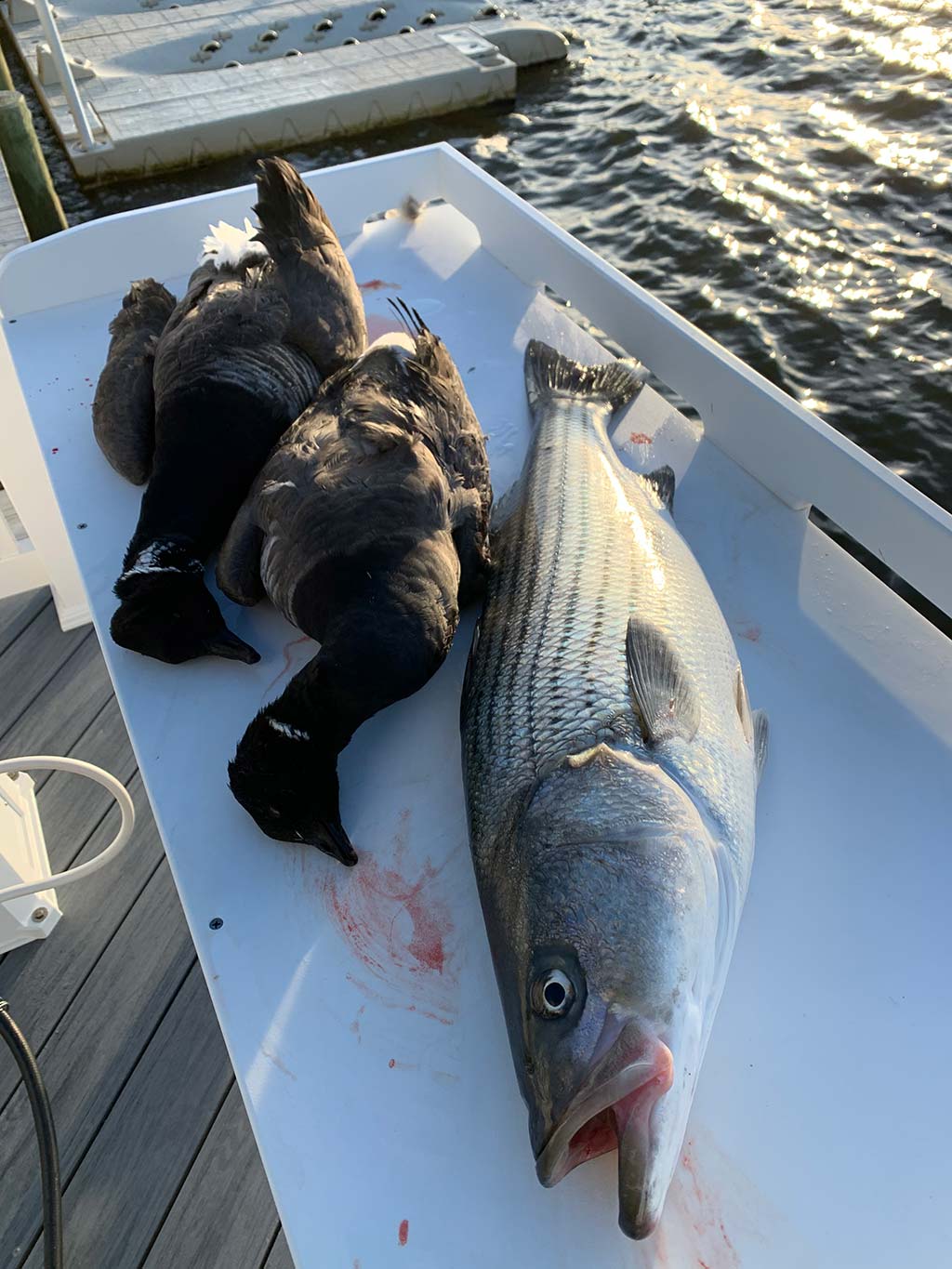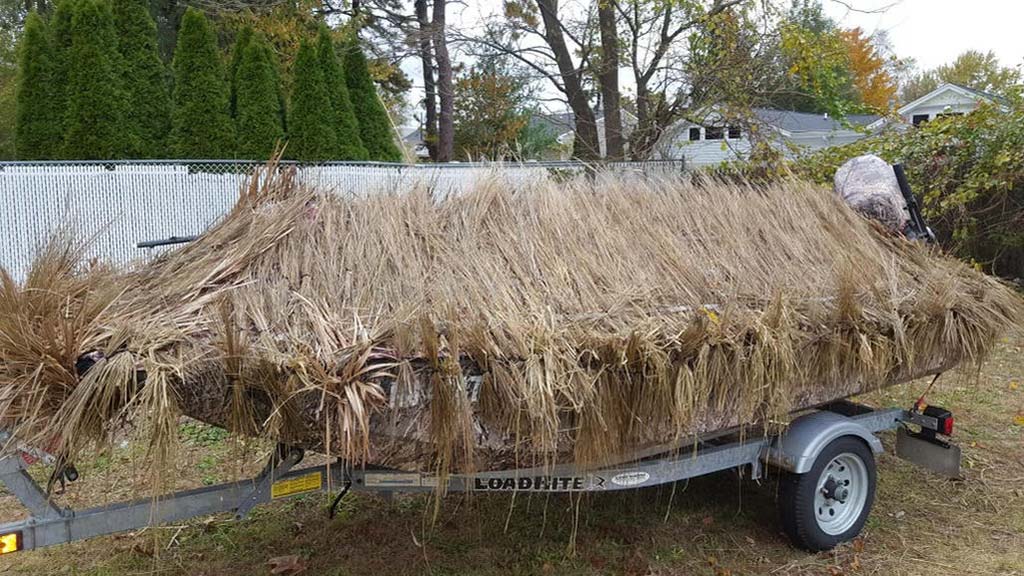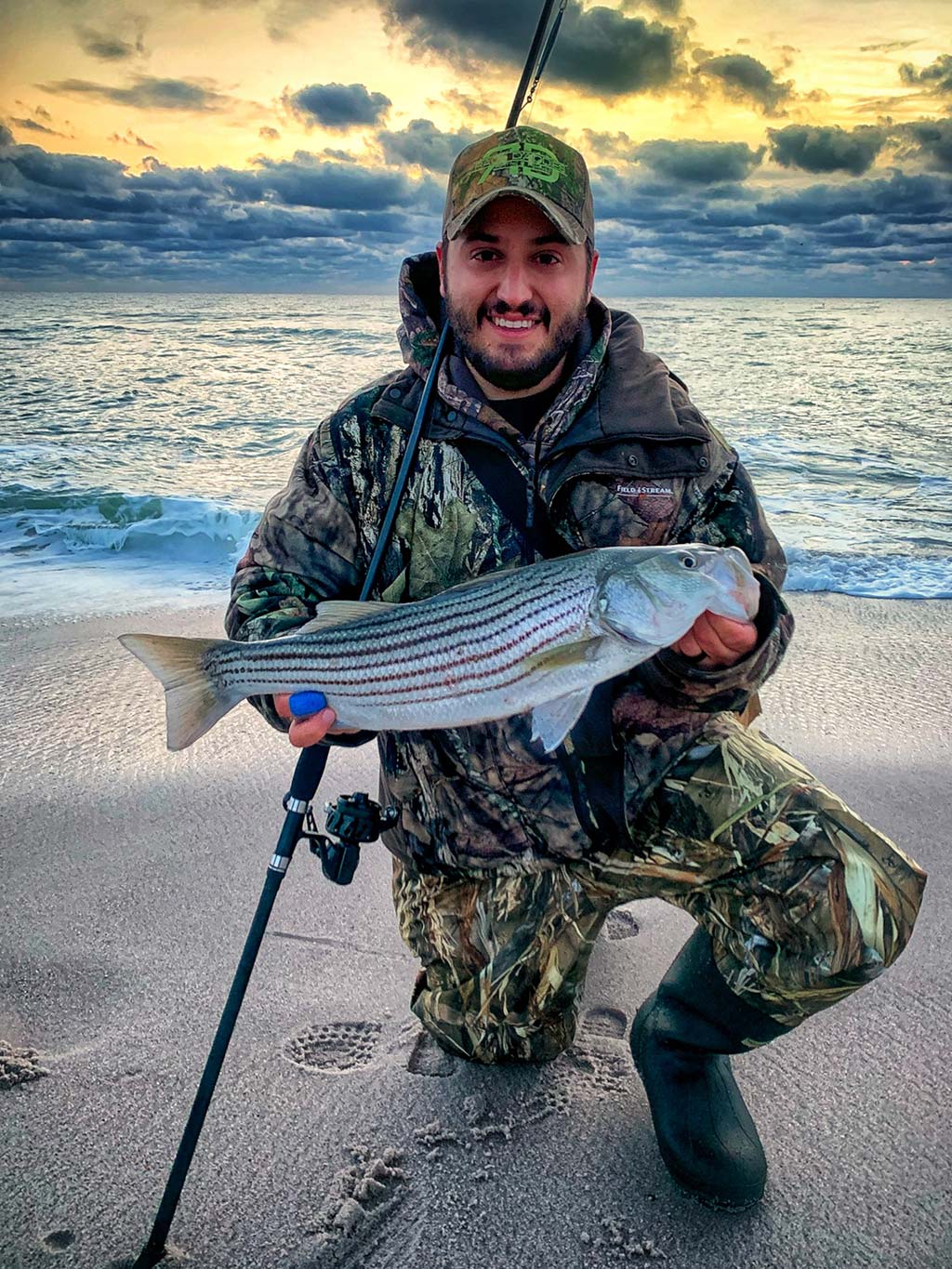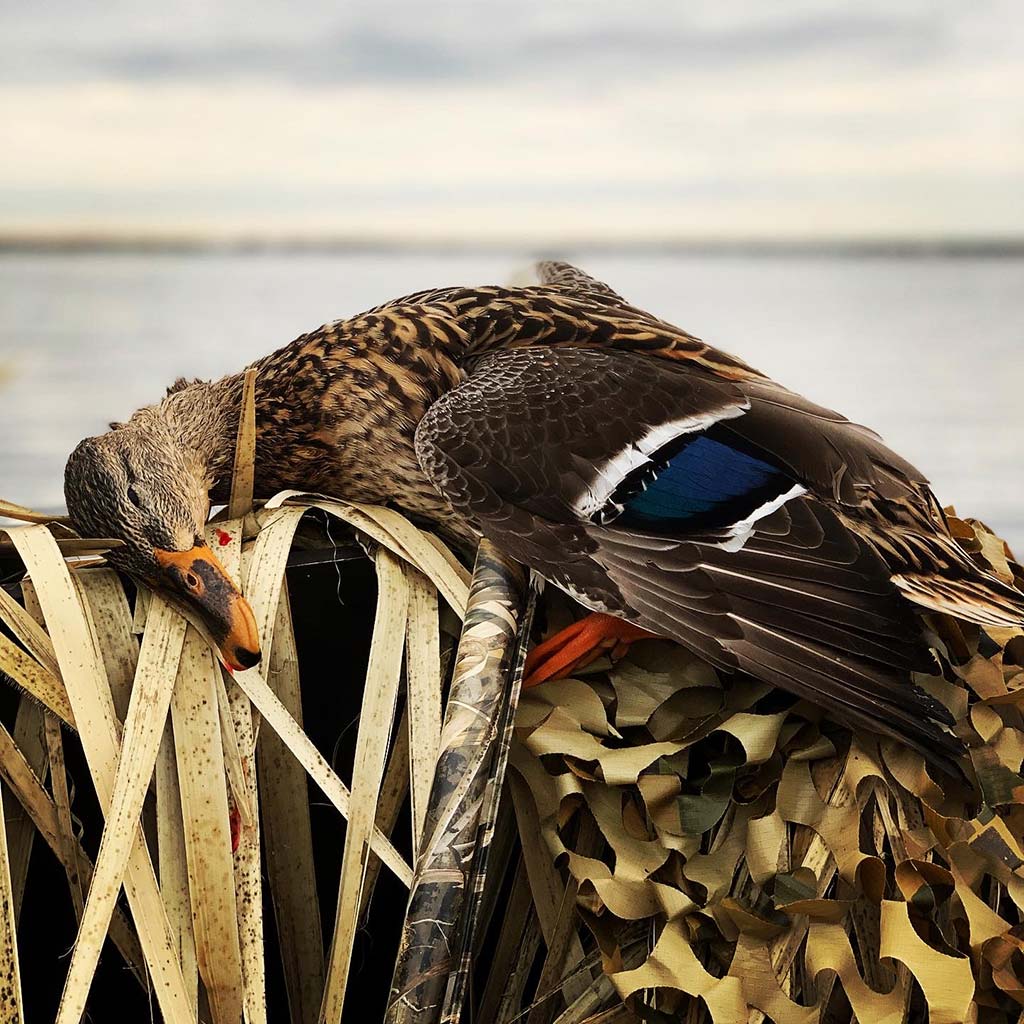
A rich history of waterfowl and fall fishing at the Jersey Shore.
Fall is a magical time at the Jersey shore. While the fish start migrating back to the southern waters, waterfowl also begin their journey to escape the harsh winters and find plentiful food in the open warmer waters.
While most people are craving the return of striped bass and blues, my decision is conflicted with the return of the ducks. So why not try to fish and hunt concurrently? Come fall, these become my favorite trips for what I refer to as “Cast and Blast” combo trips, fishing while hunting for waterfowl!
A “Sneak” Box Attack

A license is required to hunt in New Jersey and a person must be a minimum of 10 years of age (unless qualifying for farmer exemption). A completed hunter education course or a resident license from New Jersey or any another state is required to obtain a hunting license in the state. Anyone 16 or older who hunts waterfowl must possess a New Jersey Waterfowl Stamp in addition to the Federal Duck Stamp. Both of these stamps are valid July 1 through June 30. A current HIP (Harvest Information Program) number is also required. For more information go to the Hunting information page at njfishandwildlife.com.
New Jersey’s Barnegat Bay spans 42 miles in Ocean County and truly comes alive in the fall. Unbeknownst to most, the bay’s tidal estuaries, fed by several small rivers, become home to many ducks that migrate south along the Atlantic flyway. Puddle ducks, your typical mallards that you see year-round, usually show up first with a combination of a smaller bird called teal.
But the pride of the Jersey Shore is the appearance of a near female mallard look alike called a black duck, as well as the sea goose called brant. For hundreds of years, hunters have traveled from all over to have a shot at these black ducks and brant. If you haven’t ever heard the distinct calls of brant or seen their acrobatic flights over decoys, it is well worth the trip.
But what really excites many other hunters and me is the return of diver ducks. These little missiles make up the heartbeat of the back bay and surf. The most common of these, lame folk refer to as little penguins, are known as buffleheads. Small, white, and black iridescent ducks that disappear under the water for moments at a time. While not the best tasting duck, these ducks buzz around at top speeds low to water making for fast action. I had good friend Nick Honachefsky out on the last day of the season a few years ago for what he described as an “ethereal day” as we marveled at these birds for several hours. However, they unfortunately evaded our decoys like the plague that day. Besides these quick-moving buffleheads, you may also get a shot at scaup, redheads, long-tailed ducks, canvasbacks, and scoters throughout the fall and into the winter.
While hunting these birds, a variety of techniques can be used. However, the traditional way to pursue is out of a Barnegat sneak box – one of America’s original duck boats, dating back to the 1830s. These boats sit low to the water hiding from the low flying divers and hidden from the puddles by being camouflaged with local grasses. Lines of decoys flanking either side are irresistible to incoming birds. I personally hunt from a 16-foot Carolina skiff, with a wooden box on top referred to as a blind that is artfully spray-painted in different shades and green, gray, and brown. To me, it is a beautiful specimen; to everyone else in my family, it quickly adorned the name of “the ugly duckling.” Grassed up and anchored up tight to the bank, it would fool any human, and I hope any waterfowl.
What is really nice about Barnegat Bay is the number of public boat ramps accessible to hunters and fishermen alike. Ducks move, just like fish, so figuring out their patterns take some scouting and luck. Just south of Barnegat, Edwin B. Forsythe National Wildlife Refuge offers some excellent cover and hunting opportunities in the salt-marsh habitat for all kinds of species.

Casting & Blasting
Every Black Friday, my father, friends, and I brave the cold and run out of Barnegat Inlet chasing the elusive striped bass and whatever happens to fly by in an incident deemed cast and blast. Many fishing trips have been saved by the passing of a single brant or the decoying of scoters on a day when the stripers and tog won’t bite.
Now, while a gun is typical aboard nearly all of my fall trips, I’m not suggesting that everyone start packing a gun with your bucktails. There are many rules, laws, safety, and ethical considerations to think about before hunting and fishing in tandem. First and foremost, to hunt waterfowl in New Jersey, you will need a general hunting license, a state waterfowl stamp, a Harvest Information Program (HIP) certificate and a federal waterfowl stamp. Don’t even think about doing this without these documents; it only leads to tickets and perhaps even jail time.
Another important consideration is a federal law that I’m actively trying to change (I’ll discuss later). It states that hunting cannot be performed “From or by means of any motorboat or other craft having a motor attached, or any sailboat unless the motor has been completely shut off and/or the sails furled, and its progress from there has ceased.” Put simply, you cannot hunt out of a moving vessel under motor power. There is an exception for crippled birds in some areas, as one would imagine.
But the biggest problem with cast and blast in New Jersey is the ethical problem that should not be taken lightly. During the fall, especially on the weekends, the inshore striper grounds look like a scene right off the parkway. There are hundreds if not thousands of boats, swerving left and right, going near top speeds, as we hunt and chase fish. In most instances, you are fishing so close to other boats within the fleet, that one wouldn’t dare raise a gun at the passing bufflehead soaring low and speedily along the waves. It also nearly guarantees a call to the coast guard as many boaters are not used to shots being fired around them.

Times & Techniques
Two scenarios work perfectly for cast and blast: blackfish or tautog fishing and striper/blue fishing. Not only do these seasons coincide with duck season, but they happen at moments when you aren’t actively moving all the time. When stripers start feeding on sand eels and bunker schools, you can typically see it a mile away. The seagulls are first to see it, followed by the fleets and the chatter on the radio. But every once in a while, a school pops up, and you find yourself all alone within the mayhem unfolding. This is the opportune time to not only jig THEM up with good old fashion diamond jigs or Tsunami Holographic sand eels; it’s also a time to keep your eyes out for the passing scoter!
Mushin Sportfishing/Camo Mushin QRF
Capt. Alan Lee
609-731-3742
mushinsportfishing.com
Barnegat Bay Fishing
Capt. Joe Rizzo
609-618-3847
barnegatbayfishing.com
Kettle Creek Outfitters
Capt. Frank Wagenhoffer
201-704-0066
kettlecreekoutfitters.com
Reedy Creek Outfitters
Capt. Brian LaFey
848-992-0621
www.rconj.com
Reel Fowl Outfitters
Captain Mike Bell
609-744-3345
reelfowloutfitters.com
While a line of scoters or bufflehead decoys off the back cleat of your boat works wonders, it’s not always necessary. The birds are migrating from the north, and just as you are weaving throughout the fleet of boats, so are the birds. Sometimes they mess up and get close enough for someone on board to yell duck, which confusingly means a duck is coming or everyone should duck! Just make sure that the engine is off while you’re jigging for stripers, and be sure of your surroundings (get away from the fleet!)
I try not to carry too many rods on these types of trips as it only adds clutter to the boat and potentially blocks a shot from getting off. Nothing ruins a fishing trip more than blasting the tip off your striper rod! To solve this problem, I try to bring rods that are rather versatile. These are typically moderate-fast action 6-1/2- to 7-foot rods that are capable of chucking large poppers to blitzing bass or slow dropping a tog jig down onto a wreck. Ever since attending ICAST this summer, I’ve become partial to St. Croix Mojo rods for all situations. Their new Mojo Inshore has enough backbone to handle the toughest fish at a great price point (and be sure to check out their new Seage rods coming out this fall-winter!).
Blackfishing is another scenario where I love to have a shotgun sitting about. The easiest time to do this is on days with calm wind and weak current where it is easy to drop a tog jig tipped with crab on top of a wreck. However, in the fall and winter, these days are rare. In most cases, anchoring is necessary. The art of anchoring is not as simple as it seems, and it truly takes skill and trial and error to get it right. Sometimes it takes hours to get it right. The issue here lies in the fact that once a duck is shot, one must un-anchor to go retrieve that duck. The simple remedy is to attach a good float to the end of the anchor line. This way you can un-anchor by detaching from the line and then quickly reattach by finding the float (just make sure that float is on good, or you will lose an anchor!).
In recent years, spot-lock anchoring on Minn Kota trolling motors has changed the anchoring game! These GPS precise anchoring systems have outdated the artful craft of anchoring using wreck anchors and made blackfishing easier than ever. However, with the current laws, the act of using these trolling motors while shooting a gun is 100% illegal. I had a chat with folks from the New Jersey Division of Fish and Wildlife about changing this law to exclude anchoring systems, but for now, the law is the law.
Whether you decide to hunt, fish, or do both, the fall season at the Jersey shore has you covered. Whatever you choose to do, be safe, be wise, and enjoy your time outdoors!



